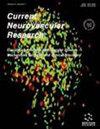步态参数可反映患有脑小血管疾病的老年人的认知能力:一项横断面研究
IF 1.7
4区 医学
Q3 CLINICAL NEUROLOGY
引用次数: 0
摘要
背景:脑小血管病(CSVD)是一种常见的慢性进展性疾病。高步态变异性是否是认知皮质功能障碍的标志仍不清楚:本研究共纳入 285 名受试者(年龄在 60 至 85 岁之间,60.3% 为女性),其中包括 37 名对照组受试者、179 名法泽卡斯 II 型受试者和 69 名法泽卡斯 III 型受试者。白质高密度的严重程度通过法泽卡斯分级量表进行评估。步态参数使用基于视觉的人工智能步态分析仪进行评估。认知功能通过 MMSE、MoCA、DST 和 VFT 进行测试:步态速度、步态长度和摆动时间等三个步态参数与 CSVD 患者的认知功能相关。步态速度与认知能力相关,包括 MMSE(β 0.200;95%CI 1.706-6.018;P <;.001)、MoCA(β 0.183;95%CI 2.047-7.046;P <;.001)、DST(阶次)(β 0.204;95%CI 0.563-2.093;P =.001)和 VFT(β 0.162;95%CI 0.753-4.865;P =.008)。步态长度与认知能力有关,包括 MMSE(β 0.193;95%CI 3.475-12.845;P =.001)、MoCA(β 0.213;95%CI 6.098-16.942;P <;.001)、DST(顺序)(β 0.224;95%CI 1.056-4.839;P <;.001)和 VFT(β 0.149;95%CI 1.088-10.114;P =.015)。摇摆时间与认知表现相关,包括 MMSE (β - 0.242; 95%CI -2.639 to -0.974; P <.001)、MoCA (β -0.211; 95%CI -2.989 to -1.034; P <.001)和 DST(逆序)(β -0.140; 95%CI -0.568 to -0.049; P =.020):本研究揭示了 CSVD 患者步态参数与认知表现之间的关系,步态参数的恶化可反映 CSVD 老年人的认知障碍甚至痴呆。本文章由计算机程序翻译,如有差异,请以英文原文为准。
Gait Parameters can Reflect Cognitive Performance in Older Adults with Cerebral Small Vessel Disease: A Cross-sectional Research
Background: Cerebral small vessel disease (CSVD) is a common chronic progressive disease. It remains unclear whether high gait variability is a marker of cognitive cortical dysfunction. <p> </P> Methods: This study included 285 subjects (aged from 60 to 85 years, 60.3% female) including 37 controls, 179 presented as Fazekas II, and 69 presented as Fazekas III. The severity of white matter hyperintensities was assessed by the Fazekas Rating Scale. Gait parameters were assessed using a vision-based artificial intelligent gait analyzer. Cognitive function was tested by MMSE, MoCA, DST, and VFT. <p> </P> Results: Three gait parameters including gait speed, gait length, and swing time were associated with cognitive performance in patients with CSVD. Gait speed was associated with cognitive performance, including MMSE (β 0.200; 95%CI 1.706-6.018; P <.001), MoCA (β 0.183; 95%CI 2.047-7.046; P <.001), DST (order) (β 0.204; 95%CI 0.563-2.093; P =.001) and VFT (β 0.162; 95%CI 0.753-4.865; P =.008). Gait length was associated with cognitive performance, including MMSE (β 0.193; 95%CI 3.475-12.845; P =.001), MoCA (β 0.213; 95%CI 6.098-16.942; P <.001), DST (order) (β 0.224; 95%CI 1.056-4.839; P <.001) and VFT (β 0.149; 95%CI 1.088- 10.114; P =.015). Swing time was associated with cognitive performance, including MMSE (β - 0.242; 95%CI -2.639 to -0.974; P<.001), MoCA (β -0.211; 95%CI -2.989 to -1.034; P <.001) and DST (reverse order) (β -0.140; 95%CI -0.568 to -0.049; P =.020). <p> </P> Conclusion: This study revealed that the relationship between gait parameters and cognitive performance in patients with CSVD and the deteriorated gait parameters can reflect cognitive impairment and even dementia in older people with CSVD.
求助全文
通过发布文献求助,成功后即可免费获取论文全文。
去求助
来源期刊

Current neurovascular research
医学-临床神经学
CiteScore
3.80
自引率
9.50%
发文量
54
审稿时长
3 months
期刊介绍:
Current Neurovascular Research provides a cross platform for the publication of scientifically rigorous research that addresses disease mechanisms of both neuronal and vascular origins in neuroscience. The journal serves as an international forum publishing novel and original work as well as timely neuroscience research articles, full-length/mini reviews in the disciplines of cell developmental disorders, plasticity, and degeneration that bridges the gap between basic science research and clinical discovery. Current Neurovascular Research emphasizes the elucidation of disease mechanisms, both cellular and molecular, which can impact the development of unique therapeutic strategies for neuronal and vascular disorders.
 求助内容:
求助内容: 应助结果提醒方式:
应助结果提醒方式:


